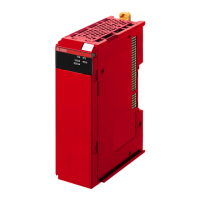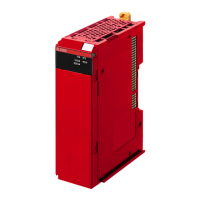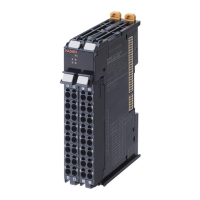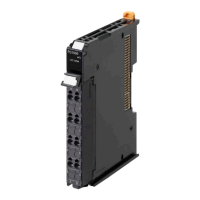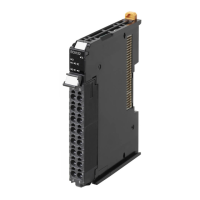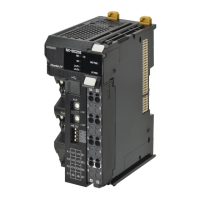• All related EtherNet/IP nodes are reset when you transfer settings for the built-in EtherNet/IP port
(including IP addresses and tag data links settings). The settings can only be enabled after the re-
set. Confirm that the system will not be adversely affected by resetting nodes before you transfer the
settings.
•
If EtherNet/IP tag data links (cyclic communications) are used with a repeating hub, the communica-
tions load on the network will increase. This will increase collisions and may prevent stable commu-
nications. Do not use repeating hubs on networks where tag data links are used. Use an Ethernet
switch instead.
EtherCAT Communications
• Make sure to use the communications distance, number of nodes connected, and method of con-
nection for EtherCAT within specifications.
Do not connect EtherCA
T communications to EtherNet/IP, a standard in-house LAN, or other net-
works. An overload may cause the network to fail or malfunction.
• Malfunctions or unexpected operation may occur for some combinations of EtherCAT revisions of
the master and slaves. If you disable the revision check in the network settings, use the Sysmac
Studio to check the slave revision settings in the master and the actual slave revisions, and then
make sure that functionality is compatible in the slave manuals or other references. You can check
the actual slave revisions from the Sysmac Studio or on slave nameplates.
• After you transfer the user program, the CPU Unit is restarted and communications with the Ether-
CAT slaves are cut off. During that period, the slave outputs behave according to the slave specifi-
cations. The time that communications are cut off depends on the EtherCAT network configuration.
Before you transfer the user program, confirm that the system will not be adversely affected.
• If the Fail-soft Operation Setting is set to Stop, process data communications will stop for all
slaves when an EtherCAT communications error is detected in a slave. At that time, the Servo Drive
will operate according to the Servo Drive specifications. Make sure that the Fail-soft Operation
setting results in safe operation when a device error occurs.
• Even if the Process Data Communication is stopped and subsequently restored automatically, take
the external safety measures or set the Fail-soft Operation Settings to Stop to make the system op-
erate safe.
• EtherCAT communications are not always established immediately after the power supply is turned
ON. Use the system-defined variables in the user program to confirm that communications are es-
tablished before attempting control operations.
• If noise occurs or an EtherCAT slave is disconnected from the network, any current communications
frames may be lost. If frames are lost, slave I/O data is not communicated, and unintended opera-
tion may occur. The slave outputs will behave according to the slave specifications. Refer to the
manual for the slave. If a noise countermeasure or slave replacement is required, perform the fol-
lowing processing.
a) Program the Input Data Invalid system-defined variable as an interlock condition in the user pro-
gram.
b) Set the PDO communications timeout detection count setting in the EtherCAT master to at
least 2. Refer to the NJ/NX-series CPU Unit Built-in EtherCAT Port User’s Manual (Cat. No.
W505) for details.
• When an EtherCAT slave is disconnected, communications will stop and control of the outputs will
be lost not only for the disconnected slave, but for all slaves connected after it through to the physi-
cal end node. Confirm that the system will not be adversely affected before you disconnect a slave.
Precautions for Safe Use
27
NX-series NX502 CPU Unit Hardware User's Manual (W629)
